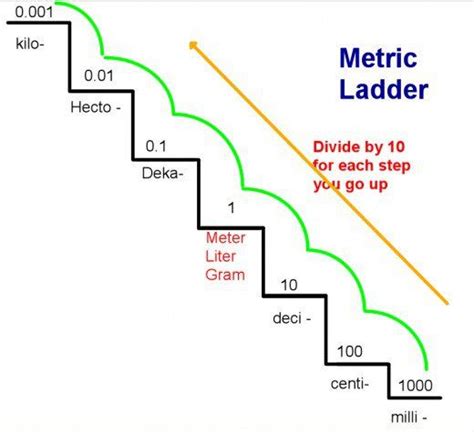How Many Litres In A Metric Ton
Arias News
Apr 08, 2025 · 4 min read

Table of Contents
How Many Litres in a Metric Ton? A Comprehensive Guide
Understanding the relationship between volume (litres) and mass (metric tons) is crucial in various fields, from logistics and shipping to chemical engineering and agriculture. While seemingly simple, the conversion isn't straightforward because it depends entirely on the density of the substance involved. A metric ton of feathers will occupy a vastly larger volume than a metric ton of lead, for instance. This article will delve into the intricacies of this conversion, exploring the underlying principles, providing practical examples, and clarifying common misconceptions.
Understanding Density: The Key to Conversion
The core concept underpinning the conversion between litres and metric tons is density. Density is defined as the mass per unit volume of a substance. It's typically expressed in kilograms per cubic metre (kg/m³) or grams per cubic centimetre (g/cm³). The formula for density is:
Density (ρ) = Mass (m) / Volume (V)
To find the volume (in litres) of a metric ton (1000 kg) of a substance, we need to rearrange this formula:
Volume (V) = Mass (m) / Density (ρ)
Since 1 cubic metre (m³) equals 1000 litres, we can easily convert the volume from cubic metres to litres.
The Importance of Knowing the Substance
The critical takeaway is that you cannot convert metric tons to litres without knowing the density of the substance. Every material has a unique density, which varies with temperature and pressure. For example:
-
Water: At 4°C, the density of water is approximately 1000 kg/m³ (or 1 g/cm³). This means 1 cubic metre of water weighs 1000 kg (1 metric ton). Therefore, 1 metric ton of water occupies approximately 1000 litres.
-
Gasoline: Gasoline has a lower density than water, typically around 720 kg/m³. Therefore, 1 metric ton of gasoline will occupy a larger volume than 1 metric ton of water.
-
Steel: Steel, being much denser than water, has a density around 7850 kg/m³. A metric ton of steel will occupy a significantly smaller volume.
Calculating Volume: Step-by-Step Guide
Let's illustrate the calculation with a few examples:
Example 1: Water
- Mass (m): 1 metric ton = 1000 kg
- Density (ρ): 1000 kg/m³
- Volume (V): 1000 kg / 1000 kg/m³ = 1 m³ = 1000 litres
Example 2: Gasoline
- Mass (m): 1 metric ton = 1000 kg
- Density (ρ): 720 kg/m³
- Volume (V): 1000 kg / 720 kg/m³ ≈ 1.39 m³ ≈ 1390 litres
Example 3: Steel
- Mass (m): 1 metric ton = 1000 kg
- Density (ρ): 7850 kg/m³
- Volume (V): 1000 kg / 7850 kg/m³ ≈ 0.13 m³ ≈ 130 litres
Practical Applications and Industries
Understanding this conversion is essential in numerous industries:
1. Transportation and Logistics:
-
Shipping: Knowing the volume of goods helps determine the size of containers or tankers needed for efficient and cost-effective transportation. Incorrect volume estimations can lead to wasted space or overloaded vehicles.
-
Fuel Efficiency: In the transportation industry, the volume of fuel consumed is critical for calculating fuel costs and optimizing routes.
2. Chemical Engineering and Processing:
-
Reactor Design: The volume occupied by reactants and products is vital in designing chemical reactors of appropriate size and capacity.
-
Storage and Handling: Proper storage and handling of chemicals requires accurate estimations of volumes to prevent spills and ensure safety.
3. Agriculture:
-
Irrigation: Farmers need to know the volume of water required for irrigation to optimize water usage and crop yields.
-
Fertilizer Application: Accurate calculations of fertilizer volumes are necessary for efficient and effective nutrient application.
4. Environmental Science:
-
Pollution Control: Estimating the volume of pollutants helps in designing effective pollution control strategies.
-
Waste Management: Accurate volume calculations are crucial for managing and disposing of waste effectively.
Common Mistakes and Misconceptions
A frequent error is assuming a universal conversion factor between metric tons and litres. There isn't one. The conversion always hinges on the density of the specific material being considered. Failure to account for density leads to significant inaccuracies.
Another common mistake is confusing weight and volume. While related through density, they are distinct physical quantities. Weight is a measure of the force of gravity on an object, whereas volume is a measure of the space it occupies.
Beyond Simple Calculations: Temperature and Pressure Effects
The density of a substance isn't always constant. Temperature and pressure can significantly influence density, particularly for gases and liquids. For accurate conversions, it's essential to consider these factors and use density values appropriate for the specific temperature and pressure conditions.
Conclusion: Accurate Conversions for Precise Results
Converting metric tons to litres necessitates understanding the fundamental relationship between mass, volume, and density. This conversion is not a simple, fixed formula; it depends entirely on the material's density. This comprehensive guide clarifies the process, highlights practical applications across diverse industries, and underscores the importance of accounting for density, temperature, and pressure for precise and reliable results. Always remember to consult reliable sources for the density of the specific substance you are working with to avoid significant errors in your calculations.
Latest Posts
Latest Posts
-
Distance From Biloxi Mississippi To New Orleans
Apr 08, 2025
-
5am To 12pm Is How Many Hours
Apr 08, 2025
-
Is A Business Bachelor A Bachelor Of Art
Apr 08, 2025
-
How Many Oz In A Bottle Of Tequila
Apr 08, 2025
-
How Many Feet In 3 4 Acre
Apr 08, 2025
Related Post
Thank you for visiting our website which covers about How Many Litres In A Metric Ton . We hope the information provided has been useful to you. Feel free to contact us if you have any questions or need further assistance. See you next time and don't miss to bookmark.